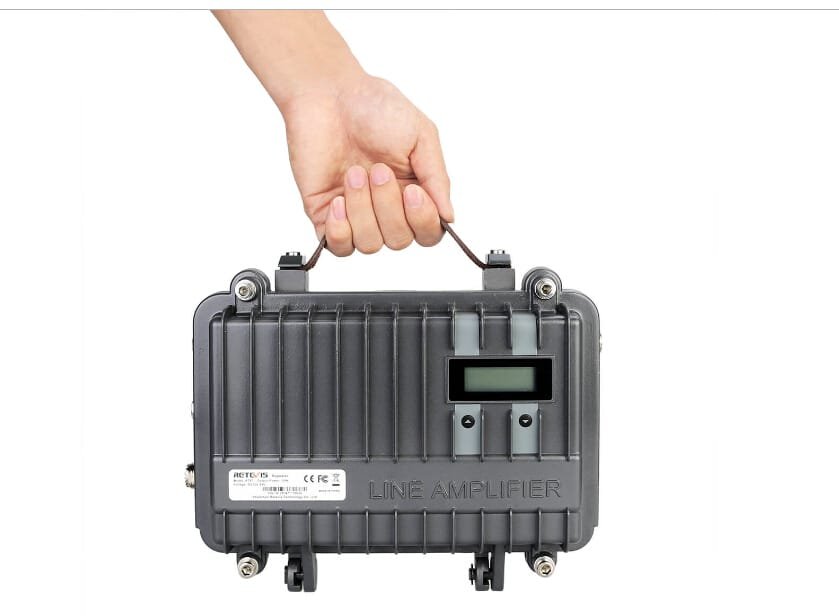The environment discription for community
Our community continues to be under development and will for at least another two years. When completed it will consist of approximately 2000 ‘doors’ or living units, consisting of single family, two family (side-by-side & up/down) and multi family multi level condominium style units. The development covers over 1,000 acres. It is almost 2.0 miles long and 0.75 miles wide, strewn with alligator populated lakes (retention ponds) through out. There are community buildings and amenities (pool, exercise room, tennis courts, etc.) and many, many roads and gates. the article to introduce RT97 repeater usage in a Florida community for emergency purposes
Since the location is Florida, hurricanes and other major storms are normal and planned for. In this community the owners have established and are growing an emergency response team. The team has sectioned off the community, on paper, into manageable sized zones which they believe can be serviced by team members in an emergency situation. The management structure includes a central control point which is expected to be able to communicate both internally to the zones and externally to emergency services elsewhere within the region.
Since the community is self funded it was first thought that inexpensive over the counter FRS/GMRS radios would be sufficient to provide reliable communications on a very limited budget. A test was conducted with eight individuals positioned at the furthest extremes within the community, each carrying a FRS/GMRS hand held radio.
A command post was set up using a 24’ mast topped with a vertical GMRS antenna and a borrowed 15 watt radio in a parking lot near one of the main buildings. The results were very interesting. Not all zones could hear all other zones with the small radios but the command post could hear and communicate with everyone and the zones could hear and communicate with the command post.
Clearly the command post with the external mast mounted antenna and more powerful radio was a significant factor. It was further found that the less powerful FRS radios were limited to ~3/4 mile and the 2 watt GMRS radios were effective to ~1¼ miles.
After analyzing the test data it became clear that zone radios in the 2 watt range would work fine as long as major communications were always directed back to a central command post with a relatively high external antenna and a radio operating somewhere in the 5 – 15 watt range. It was also though that communications within a particular zone could be accomplished with less powerful radios as distances would be ¼ – ½ mile at most.
The next issue became one of deployment. Where could a central radio be located without having direct access to a fixed location – rooms are a difficult commodity to obtain will be so for the foreseeable future. Additionally, how can a radio be powered in an emergency situation?
It was first thought to simply duplicate the command post radio and have someone be in charge of relaying the zone communications as needed. A better idea that developed was to use a small repeater that could be reached from anywhere within the community that could be deployed at various locations should accessibility become an issue after a storm.
The idea of using a repeater gained momentum. A small repeater could be also be mounted in a water resistant case on a central small mast/tower and be powered by battery and a small solar panel. Given that all zones and a command post could communicate equally well internally using hand held radios through the repeater and that the repeater could be powered via solar/battery solutions made the repeater alternative the number one communications option. Communications outside the community with various emergency related organizations will be handed via amateur radio (ham) operators.
Why choose RT97 repeater for this community
The search for a suitable and economical repeater led to the Retevis RT97. Being priced in the $400 range and capable of using the frequencies necessary while being light weight, having enough RF power for the job and being in a single package clinched the deal. The capability to operate over multiple software programmable channels within a given frequency range added flexibility as changes may have to be made going forward depending on how the surrounding communities grow.
RT97 link: https://www.retevis.com/rt97-portable-repeater-power-amplifier-uhf
 Next up was a discussion on the zone radios. Each zone leader would need a radio capable of communicating on separate transmit and receive frequencies for use with a repeater as well as operating simplex (same frequency) with other like radios within each zone. Managing multiple dissimilar radios with differing methods of changing frequencies and tones was thought to be too difficult. A further search of an economical solution led to the Retevis RT21.
Next up was a discussion on the zone radios. Each zone leader would need a radio capable of communicating on separate transmit and receive frequencies for use with a repeater as well as operating simplex (same frequency) with other like radios within each zone. Managing multiple dissimilar radios with differing methods of changing frequencies and tones was thought to be too difficult. A further search of an economical solution led to the Retevis RT21.
It is both simplex and repeater capable and software programmable with output power of 2.5 watts and has 16 channels. Another significant benefit of the latest generation 2 version of the RT21 is the lithium ion battery capacity of 3,000 mah which is 2-3 times more than other similar radios. In the future, additional RT21s will probably be purchased for communications within zones and the extra channel capability will ensure a good fit.
Views: 195


